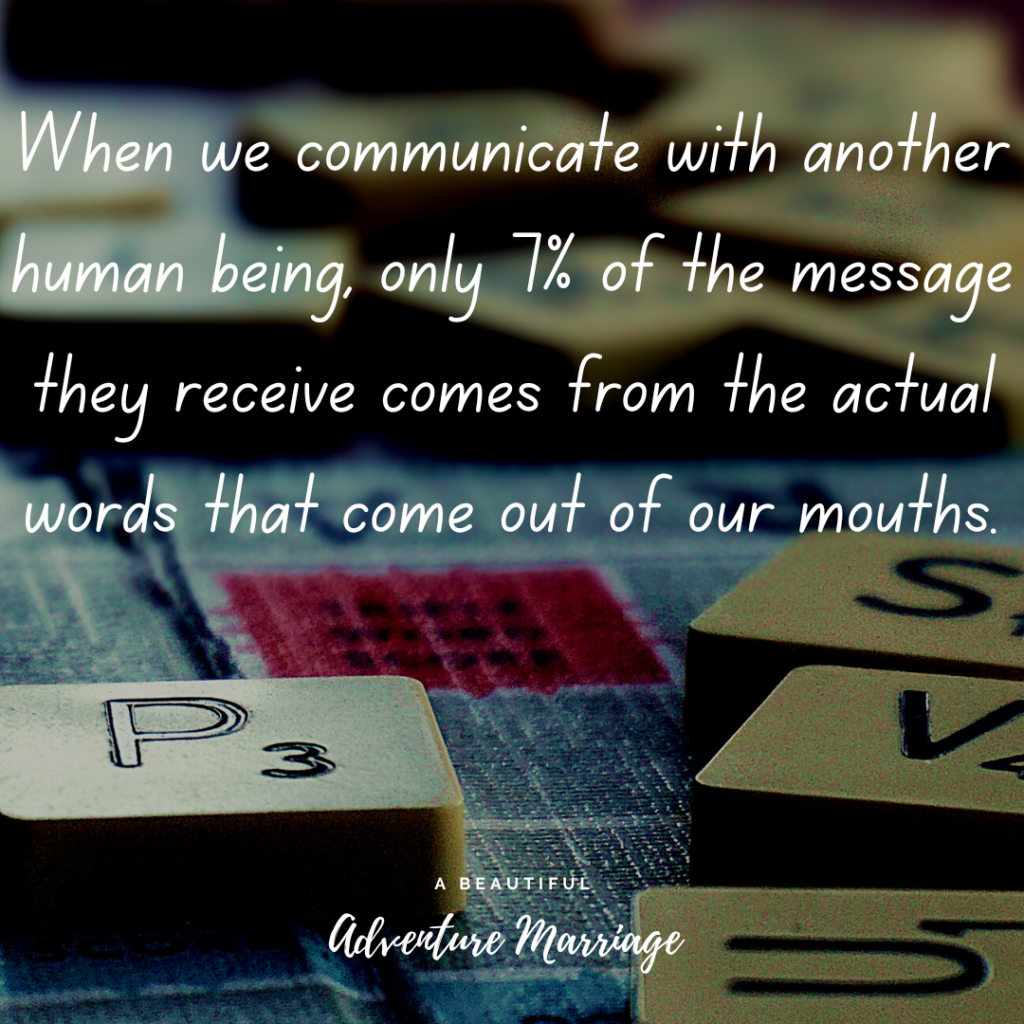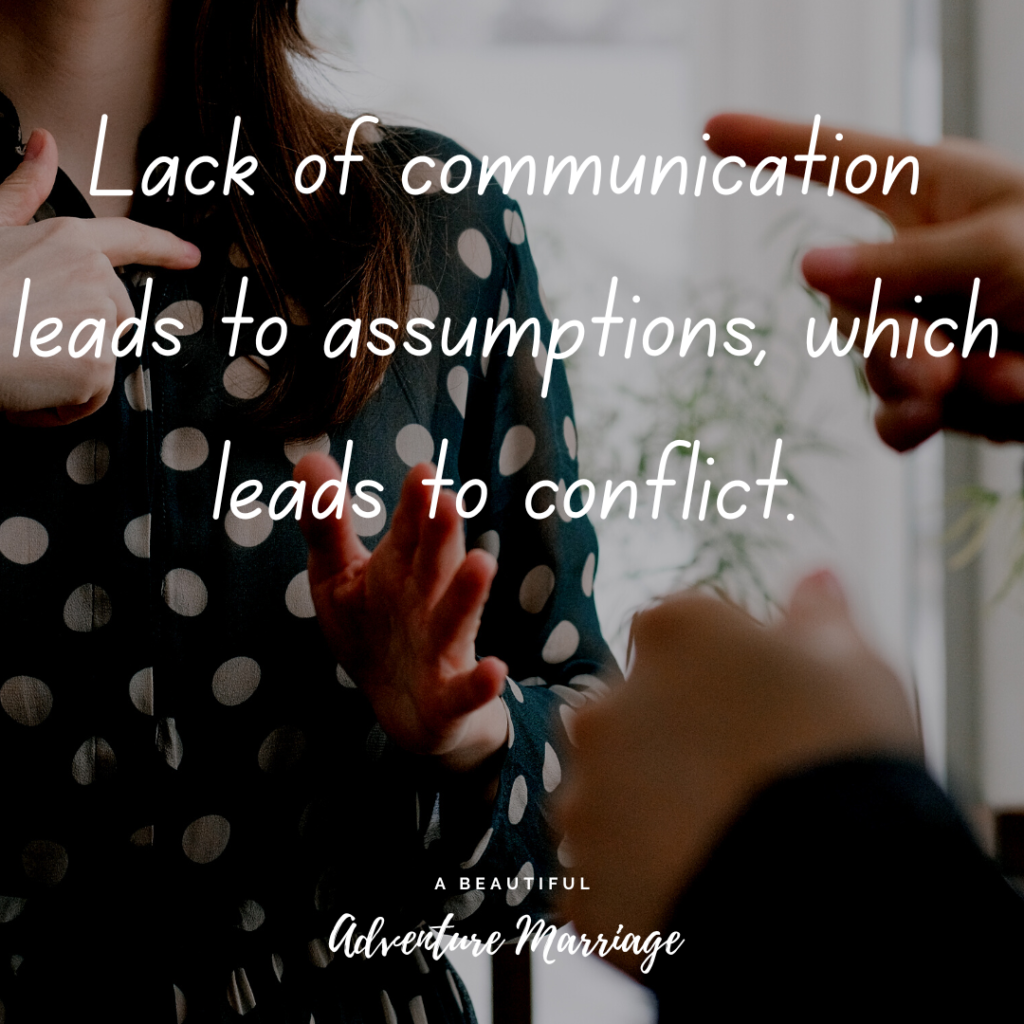Hello friends,
Communication breakdowns and misunderstandings! Lack of communication or the silent treatment!
If you ask any couple to name one thing they struggle with most in their marriage, they’d probably say something about communication. Communication between any two people can be difficult, but in marriage a lack of communication or a breakdown in communication can cause a lot of unnecessary harm. That’s why here at A Beautiful Adventure Marriage we often talk about communication. We believe that communication is something we can never learn enough about, and the more we know the better we can be at it.
Effective communication
While it’s true that communication problems can do a lot of damage to a marriage, communication is also how you express your love to your spouse. If combined with good and consistent behavior, it can change your marriage for the better.
There are all kinds of ways to improve your communication with your spouse. We’ve talked about a lot of methods here, and you can find them on our blogs and on our podcast. For this blog, we’ll break down four ways to communicate more effectively. These analyzes may seem simple at first, but you will find that they all need intention and thoughtfulness if they are to be truly effective.
The four “musts” of effective communication
Communication should be CLEAR.
To communicate effectively with our spouse, our communication must be clear. That means it has to make sense, not only to us, but also to our spouse. We don’t need to purposely speak in a way that confuses our spouse. They don’t have to decipher our words like some kind of code to “hope” they understand what we’re trying to say.
Now that probably seems like it would be the easiest. especially if you think you are already communicating clearly. Maybe you’re not trying to intentionally confuse your spouse, which we hope is the case. However, I would venture to say that this is the most difficult.
Because this? Great question, I would like to tell you.

So what does that mean? It means you could say the right words, but if you convey those words incorrectly, your spouse has a 93% chance of getting the wrong message. That’s wild when you think about it.
Words represent only 7% of the message received. This is why so many marriages have communication problems. One spouse says one thing and the other hears something completely different.
So how can we begin to practice clear communication?
Practice the “You Said This, I Heard That” Method.
You do this by repeating what you think your spouse said in your own words. This gives you a chance to make sure you got the message right. This also gives your spouse the ability to communicate the message in a different way if it wasn’t received correctly.
This method has helped Alex and I a lot in our communication. It revealed how often we were getting the wrong message and allowed us to fix it before the crash happened.
Communication should be calm.
We’ve learned that only 7% of the message another person receives comes from our actual words. The rest of the message comes from 55% body language and 38% tone. This shows us that staying calm and controlling our body language and tone is very important. Being calm in a situation will always improve communication. When tempers flare, it’s easy to say and do things we later regret.
By remaining calm and in control, your message will not only be received more effectively but you are less likely to hurt your spouse.

So how can we start being intentional about staying calm during a conversation?
You can do this by setting a “Pause” or “Timeout” button that can be used if you feel like you’re getting frustrated at a point you can’t control.
How does this work?
In the middle of a conversation where tempers are starting to flare, you and your spouse can say “Pause or Time Out.” That being said, give yourself or your spouse some time to calm down. The extent of the condition will determine how long you need to pause. There are two main things that need to happen for this to work:
- You both have to agree to allow the break to happen.
- You need to go back and close. You can’t just call it quits and never deal with it.
- Remember it is a pause not an end. You should be extra careful with this if you have children. It’s easy to get caught up in nighttime routines and forget to get back into the conversation. In this case, find a way to remind yourself to reconnect with your spouse. (Maybe set an alarm or write it on a sticky note.)
Communication must be CURRENT.
For communication to be fully effective, it must be timely. This means we must communicate with our spouses daily. There doesn’t have to be long periods of time when we don’t talk to our spouse. This also means that the communication we have must be up-to-date and frequent. We don’t need to leave anything to assumptions.
Now you can break the “flow” in two ways in your daily life:
- Notification of any changes that occur.
- It is not historical, especially during a conflict.
As things change, communication must happen. For example, if you and your spouse have agreed on a plan, but a situation arises that affects the plan, that situation should be discussed and changes made. We believe that many conflicts can be avoided by communicating changes. There are times when life happens and change is inevitable. Although the changes may not have been your idea, not communicating them to your spouse can make it appear that you are not following the plan that was communicated and agreed upon. It can also appear as you withhold information from your spouse, when in fact you just forgot.
If this is the case, keep a digital or physical notebook and write down things to talk about when you can sit down with your spouse. Making a few small changes can really help improve your communication and keep it current.

Another way to keep your communication current is to not become a historian. When you are in conflict with your spouse, it is not healthy or beneficial for you to bring up the past. This will only cause further controversy.
Keep the argument where it is – in the present. Deal with conflict in the moment and immediately. Being current means dealing with the here and now – not what happened 2 days, weeks, months or years ago.
Communication should be CONSTRUCTIVE.
There will be times in your relationship when you and your spouse don’t see eye to eye. In some cases, it may not be a big deal. However, there are times when a decision must be made quickly. What do you do in those moments when a decision needs to be made but you don’t agree? You use constructive communication. Now in our next blog, we’ll go over several ways you can communicate constructively. Well, we’ll keep it simple here and just say be empathetic with your spouse!
When you’re faced with a situation where you don’t agree, it can cause a lot of stress, especially if that decision affects your future. Yelling and screaming and being downright belligerent will in no way improve your communication or your marriage. Not being assertive can make your spouse feel like you don’t value them or their opinion, which can lead to more problems down the road.
You can be in a place where you disagree with your spouse and be emphatic with him. It will take a little more effort on your part, but it will be worth it for your wedding.
Ways to practice Construction Communication.
Next month, on April 12th, we’ll break down 4 ways you can have constructive conversations with your spouse. This blog will be so helpful to you because it will give you solid ways to navigate these difficult conversations! I’ll see you next month!
And remember you can do this!
We are praying for you!


